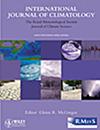Projected Changes in Diurnal Temperature Range Over India Using a Coupled Ocean–Atmosphere Regional Climate Model
Abstract
This study investigates the projected changes in the diurnal temperature range (DTR) over India and explains its considerable spatial heterogeneity from a 20-km resolution coupled regional climate model (RSM-ROMS) integration. The RSM-ROMS is driven at the lateral boundaries by the Community Climate System Model version 4 (CCSM4) model. Observations reveal spatial heterogeneity in DTR trends with significant declining trends at many grid points interspersed with areas of either increasing or insignificant trends of DTR during each of the four seasons. The present-day simulations from RSM-ROMS show reasonable skill in simulating the daily maximum temperature (Tmax) and minimum temperature (Tmin) over India. Our results show a significant decrease in DTR over the Gangetic Plains in boreal winter and fall seasons and over southeastern India during boreal summer in the projected mid-21st century climate under the RCP 8.5 emission scenario. The future reduction in DTR over Region-1 (over Bihar and the eastern regions of Uttar Pradesh) during December–February (−0.86°C) and over Region-3 (over the rain shadow regions of Peninsular India) during June–September (−0.49°C) is attributed to large changes in surface radiative fluxes, with some of the decrease in downward short wave flux attributed to an increase in high cloud cover at the time of Tmax while there is a considerable increase in downward longwave flux in the mid-21st century climate. The enthalpy fluxes at the time of Tmax also act to reduce the rate of its warming. As a result, the warming rate of Tmax is less compared with the corresponding warming rate of Tmin, which leads to a reduction of the DTR in some regions that display a significant reduction in future climate. In contrast, Region-2 (over Rajasthan) and Region-4 (over northeast India) exhibit insignificant DTR changes in the mid-21st century climate for lack of asymmetrical changes in Tmin and Tmax.


 求助内容:
求助内容: 应助结果提醒方式:
应助结果提醒方式:


